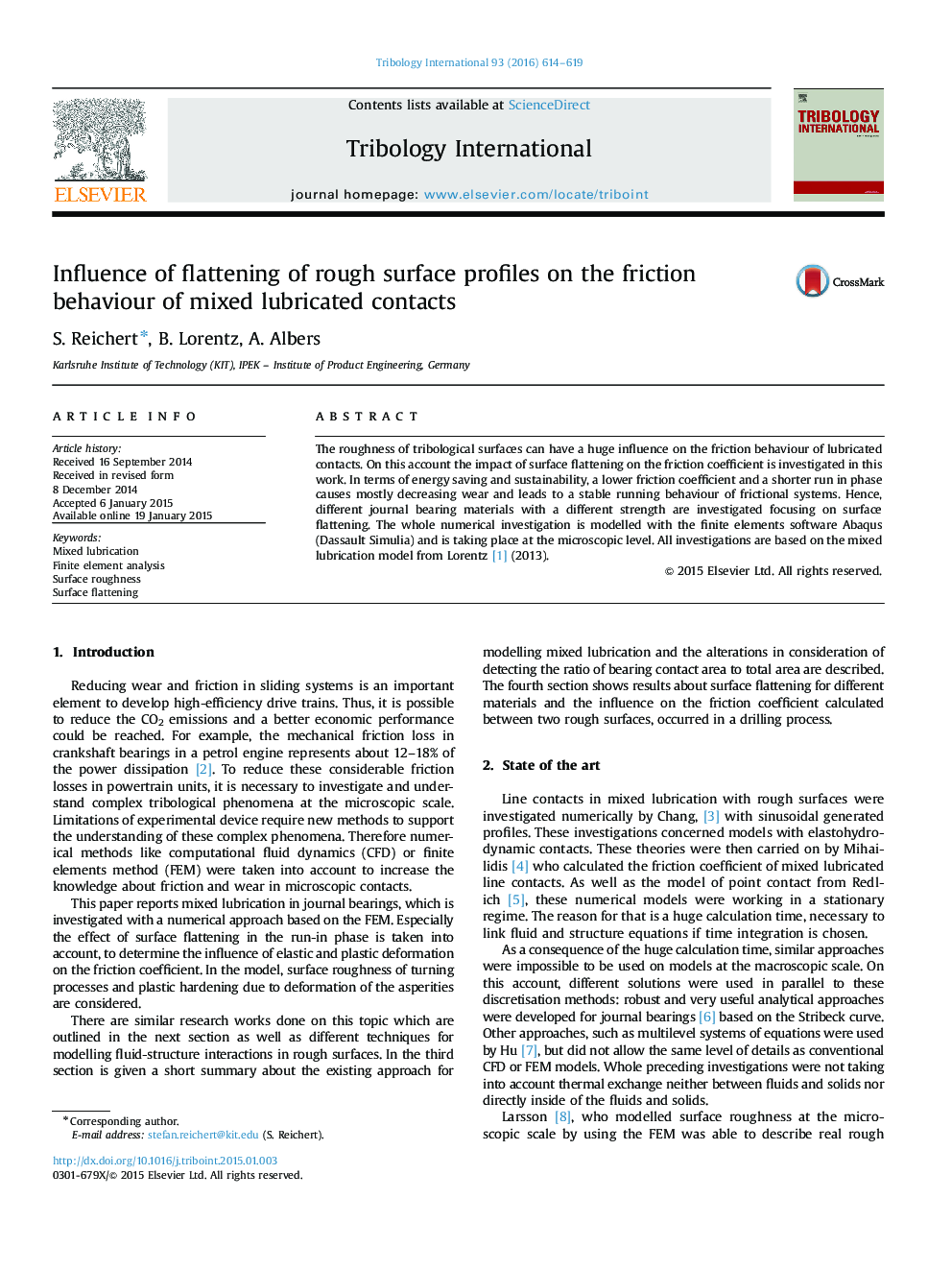| Article ID | Journal | Published Year | Pages | File Type |
|---|---|---|---|---|
| 614229 | Tribology International | 2016 | 6 Pages |
•Impact of material properties on the friction behaviour could be shown.•The influence of a constitutive model, (in this case by Johnson–Cook) regarding hardening effects in the surface layer, is investigated.•The FE-model enables the detection of solid–solid contacts on real surface profiles.
The roughness of tribological surfaces can have a huge influence on the friction behaviour of lubricated contacts. On this account the impact of surface flattening on the friction coefficient is investigated in this work. In terms of energy saving and sustainability, a lower friction coefficient and a shorter run in phase causes mostly decreasing wear and leads to a stable running behaviour of frictional systems. Hence, different journal bearing materials with a different strength are investigated focusing on surface flattening. The whole numerical investigation is modelled with the finite elements software Abaqus (Dassault Simulia) and is taking place at the microscopic level. All investigations are based on the mixed lubrication model from Lorentz [1] (2013).
